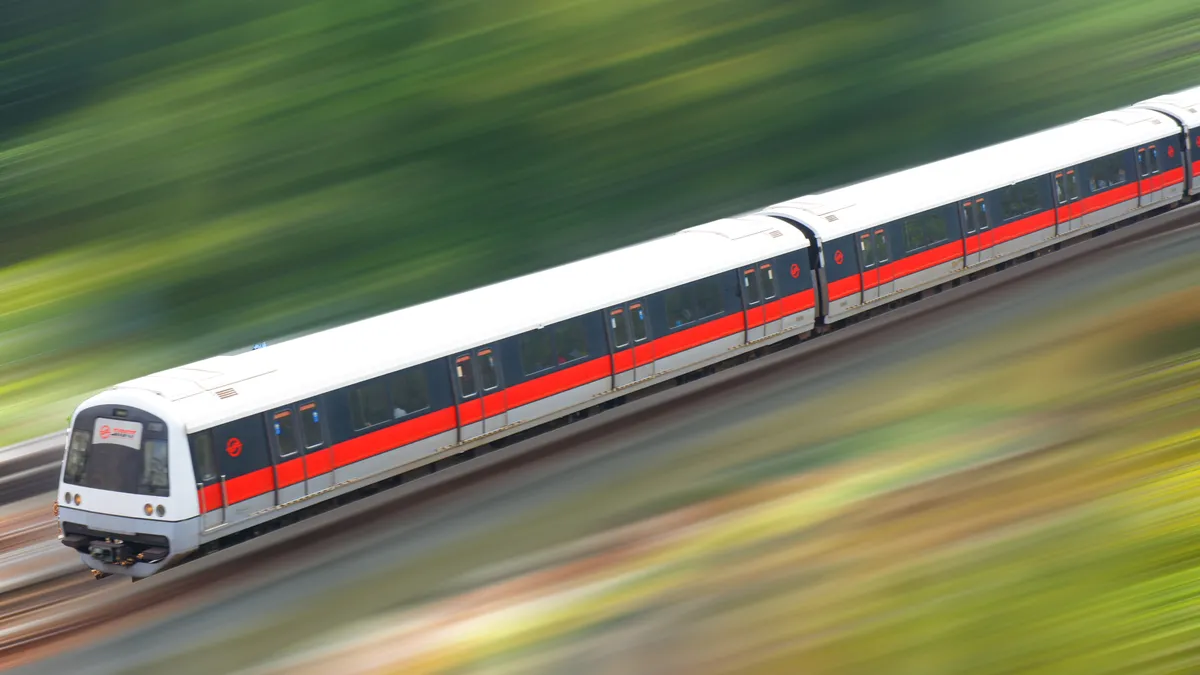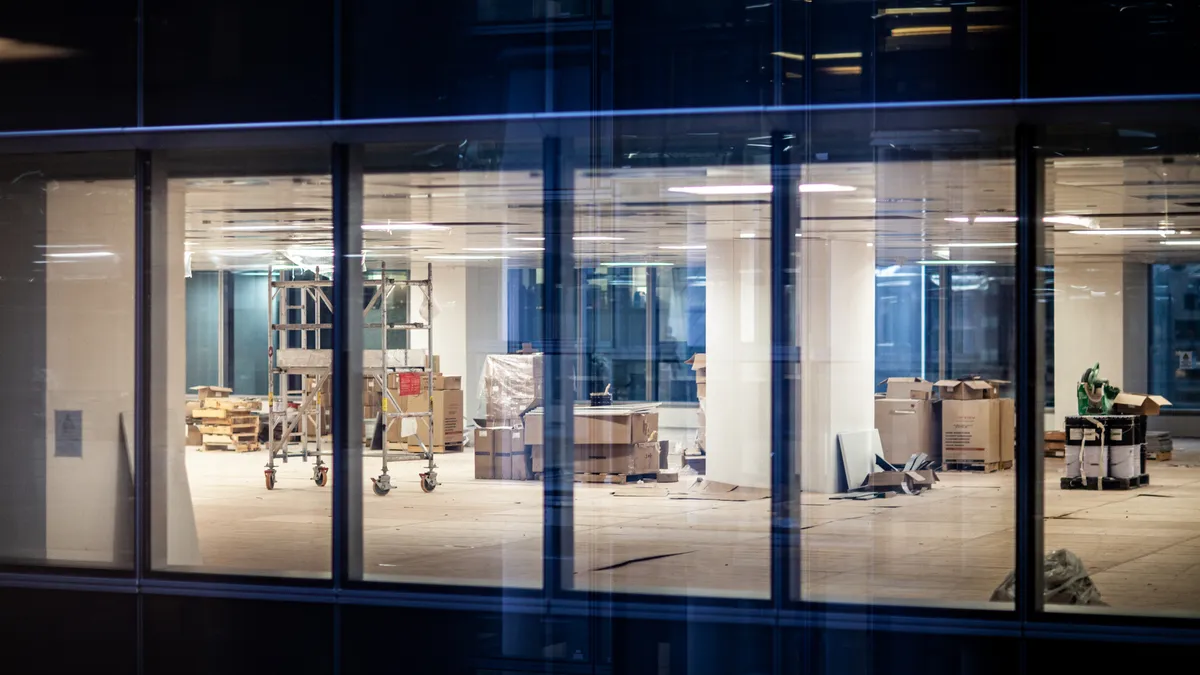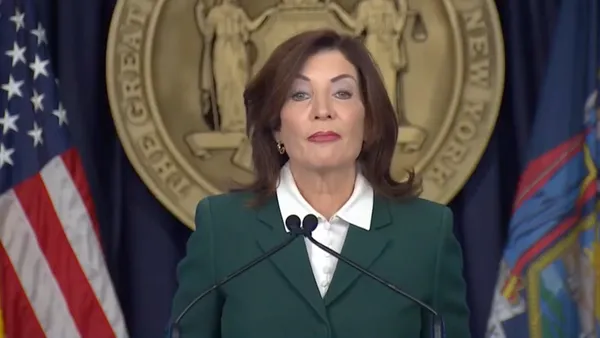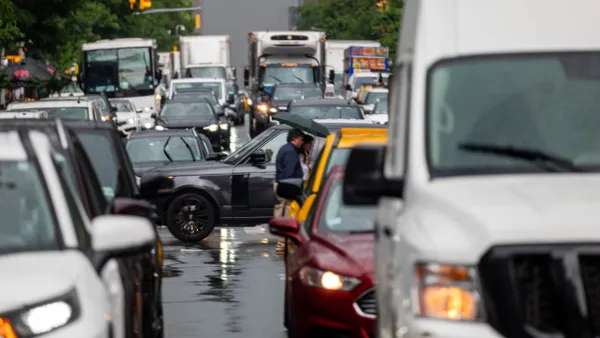Dive Brief:
- Texas Central Partners presented new project details in the first of 10 public meetings scheduled for its proposed 240-mile, $15 billion high-speed rail line between Dallas and Houston, according to Fox 4 News.
- Renderings from the developer included its proposed Dallas station where riders of the mostly-elevated rail will be able to transfer to other modes of transportation or traverse a pedestrian bridge to the city's convention center. Texas Central also said they would continue the high-speed rail between Dallas and Fort Worth, with an extra stop on that leg, as well as on the Houston-Dallas segment.
- Some have expressed concern about how the rail would affect rural property owners and agriculture operations, what part eminent domain would play in Texas Central's plan, and if taxpayers would be left on the hook if the privately-financed rail needed future financial help. Texas Central said the project will employ 10,000 people during construction and will jumpstart the new, high-tech industry of high-speed rail in the U.S.
Dive Insight:
The Federal Railroad Administration (FRA) signed off on a draft environmental review for the project in December, at which time it recommended a route that it said would pose the least risk and hardship to those along its path. The draft review was the impetus behind the project's public meetings, and it's likely that groups against the project, like Texans Against High Speed Rail, will continue to show up and voice their opposition.
Residents trying to stop the project caught the attention of state lawmakers last year, prompting Texas legislators to introduce 20 bills targeting the project, though only two of those passed. One prevents the state from assisting the project financially while the other requires sufficient safety measures.
Despite resistance, Texas Central brought on Fluor Enterprises and Lane Construction Corp. in August to execute pre-construction planning, scheduling, cost estimating, procurement and design and engineering work. The two companies will not have ownership in the project but will be the preferred design–build team when construction starts.
High-speed rail projects across the U.S. are gaining popularity as states and municipalities look for new ways to decrease traffic and expand connectivity. Projects like the highly anticipated Hyperloop One and its competitors are helping to drive that push as companies vie for the most innovative ways to satisfy such needs. A proposed $25 billion incentive for transformative "American Spirit" projects like high-speed rail from the Trump administration in its projected $1.5 trillion infrastructure push is also likely to generate interest in such projects.











